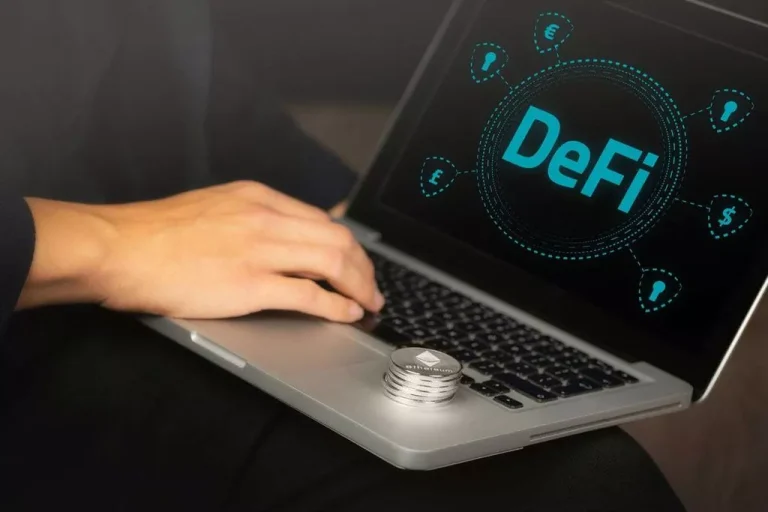An ETH switch requires 21,000 items of gas, and the base charge is 10 gwei. The painful downside of fuel costs has lengthy been a burden for crypto users, so options have been developed to bypass this problem Non-fungible token. Gas tokens are one such method that works on Ethereum due to its storage refund mechanics — a system that refunds users who delete their storage variables.
Get Started With Crypto In Minutes!
The base payment will increase by a maximum of 12.5% per block if the goal block dimension is exceeded. This exponential progress makes it economically non-viable for block measurement to remain excessive indefinitely. Stablecoins like DAI, USDT, or USDC are among the Gas Fees in Crypto most loved crypto solutions, highly appreciated for their versatility.

Wie Gasgebühren Die Sicherheit Gewährleisten Und Die Netzwerknachfrage Steuern
Other blockchain networks additionally generate charges when work is being computed. Bitcoin (BTC zero.65%), the first cryptocurrency and the largest as measured by market cap, uses the proof-of-work model to create new blocks of transactions on its network. All transactions carry a variable gasoline https://www.xcritical.in/ charge that’s based on the size and complexity of the operation.
Tron-news: Justin Solar Kündigt Abschaffung Der Gasgebühren An
Gas is principally a pricing unit inside Ethereum-based crypto networks, remunerated for validating transactions. Since Ethereum’s London Hard Fork implementation on August 5, 2021, gasoline fees on the community have utilized a base charge and a tip fee—or precedence payment. The base charge is algorithmically determined based on demand for Ethereum’s block area and is burned to cut back the circulating provide of ETH.

How Do Gas Charges Work On The Ethereum Network?
In a blockchain network like Ethereum, computers are utilizing electrical energy to compute and confirm transactions taking place. Cryptos corresponding to Ethereum function on a blockchain, a digital ledger of transactions distributed to a big and decentralized community of computer systems that manage the blockchain. This is in distinction to cloud computing, which is a centrally managed computing course of (usually through a company’s data center). Gas is paid to the decentralized network of computers for performing the work — in this case, the computing energy — wanted to execute and document operations on Ethereum. It’s as simple as this — the scale of the fuel fee awaiting a miner is shaped by the complexity of the transaction they got down to help course of.

He owns bitcoin, ether, solana, and PAXG above CoinDesk’s $1,000 disclosure threshold. USDC is the second-largest stablecoin by market cap at $51 billion, trailing Tether’s USDT, which holds a $138 billion market cap. Circle expects this launch to onboard more customers to undertake USDC. The validator will still charge the $100 gas fee, but now that payment might be divided by all 10 of you so you’ll each only pay $10.
By adjusting the tip, users can control the speed and price of their transactions in actual time. The complete transaction fees depend on the quantity of fuel wanted for a transaction, which is influenced by its complexity and current network conditions. Your gas charges are the total price of the actions in your transaction. When you send a transaction or run a , you pay in fuel charges to course of it. The gasoline restrict refers to the most quantity of fuel you might be keen to devour on a transaction. More complicated transactions involving sensible contracts require more computational work, so that they require a better gas restrict than a simple cost.
Other cryptocurrencies may merely call these transaction charges, miner fees, or one thing related. However, since Ethereum is currently the second-largest crypto by market cap, the time period “gas” is often applied when referring to the charges concerned in executing work on other blockchains. Gas fees are important for crypto transactions, particularly on Ethereum, making certain smooth community operations and safety. Learn what, precisely, fuel charges are, why they fluctuate, how they’re calculated, and sensible strategies to reduce cost utilizing tools, timing, and solutions.
In an effort to attempt to make fuel fees extra consistent, Ethereum’s EIP 1559 upgrade adjusted the calculation of base charges to be decided by the transaction before it. While the actual impacts of EIP 1559 are debated, base charges proceed to drive the entire value of gas fees up due to the increased demand for Ethereum. A lot of effort goes into lowering gasoline fees to help maintain Ethereum network usage aggressive and honest for all customers. The previously mentioned “merge” and adoption of proof of stake might drastically cut back network gas charges. Many wallets, similar to MetaMask, include built-in calculators that may automatically set the gas charge for you in real-time. Otherwise, this user must manually set the fuel fee to align with the present demand.
- Although they may seem inconvenient, they’re a core function of blockchain networks.
- They incentivize miners and validators to process transactions.
- Ethereum gasoline charges can continuously spike for days when community demand exceeds the bandwidth capability of Ethereum.
- Gas charges are greater than meets the attention, serving as a vital mechanism to steadiness out a blockchain’s operational effectivity, safety, resource allocation, and even chain-wide competition.
- This fee goes to the community participant who consists of the transaction in a new block.
Not solely that, it additionally consumes an unimaginable amount of vitality. Being able to preserve a high-level piece of equipment and pay for the energy requires start-up and maintenance prices. Put simply, the miner on a proof-of-work network wants an incentive to simply break even! Proof-of-work networks thus reward miners with a block reward for their exhausting work, usually in newly minted foreign money.
These computers (and the individuals who run them) aren’t going to do that free of charge. This signifies that we want to pay them a payment for helping us record that change of information. Another method of lowering your total gas charge value is by reducing your tip. Remember that our tip, or precedence fee, is a further value that we can give to miners in exchange for a faster transaction time. If your transaction isn’t time-sensitive and you would possibly be willing to be affected person, decreasing your tip may be a further method to spend less on gas.
Since “fuel” costs are expressed in GWEI, it has turn out to be the most generally used unit of Ether. There is not any such thing as a free lunch and there’s actually no such thing as a free transaction. If spending $5 to receive $20 at an ATM can be irritating, think about spending $100 to send $500 or obtain a PNG of a penguin. Founded in 1993, The Motley Fool is a financial providers company devoted to creating the world smarter, happier, and richer. Network fees on Ethereum are referred to as fuel.Gas is the gas that powers Ethereum. The word ‘gwei’ is a contraction of ‘giga-wei’, which means ‘billion wei’.
In the Bitcoin blockchain, the miners get newly mined Bitcoins as transaction fees. Even though they are an effective means of incentivizing miners to keep verifying transactions and preserve network safety, fuel charges are nonetheless each user’s most hated part about Ethereum. People hate gas charges not just for a basic disdain toward charges, however as a end result of they can be absurdly expensive when the community is congested. “Layer 2” is another resolution, which refers to a secondary framework for processing transactions constructed on high of an present blockchain.
However, typically, the fuel charge mannequin costs the initiator of a transaction a small fee to process the transaction. This payment goes to the network participant who includes the transaction in a new block. As I talked about earlier, gasoline fees differ all through the day and week depending on how many people need to make adjustments to the blockchain and how many validators are available. These networked computers, known as miners, execute and confirm the transactions, and get a transaction fee as a reward.